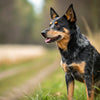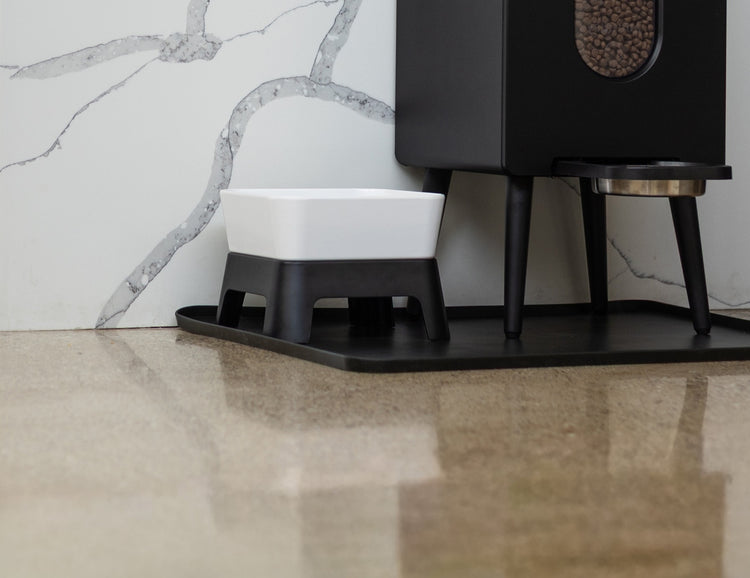Understanding How Many Calories in Wet Dog Food: A Guide for Pet Parents
- Houndsy
Table of Contents
- Introduction
- The Basics of Wet Dog Food
- Calculating Your Dog's Daily Caloric Needs
- How to Read Wet Dog Food Labels
- The Benefits of Wet Dog Food
- Combining Wet and Dry Food: A Balanced Approach
- Introducing Houndsy's Solution for Dog Feeding
- Conclusion
- Frequently Asked Questions
Introduction
Did you know that over 50% of dogs in the United States are considered overweight or obese? This alarming statistic highlights the importance of monitoring our pets’ diets closely. As dog owners, we often find ourselves pondering the nutritional value of our furry friends’ meals, especially when it comes to the popular choice of wet dog food. But how many calories are we really feeding them? In this blog post, we will dive into the calorie content of wet dog food, helping you understand what to look for and how to make informed decisions for your pet's diet.
By the end of this guide, you will learn about the average caloric content of wet dog food, how to calculate your dog's daily caloric needs, and the factors that can influence these requirements. We’ll also explore how Houndsy, with our innovative products such as the Houndsy Kibble Dispenser, can simplify your dog-feeding routine while ensuring your pup enjoys a balanced diet. So let’s embark on this journey to better understand how many calories in wet dog food and how they fit into your dog's overall health.
The Basics of Wet Dog Food
What is Wet Dog Food?
Wet dog food, often referred to as canned dog food, is a popular choice among pet owners due to its palatability and moisture content. Typically, it contains higher levels of protein and fat compared to dry kibble, making it appealing to many dogs. Wet dog food is usually packaged in cans or pouches and is designed to provide a complete and balanced diet.
Nutritional Content of Wet Dog Food
The nutritional content of wet dog food varies significantly by brand and formulation. Here are some key components to look for:
- Protein: Essential for muscle development and overall health.
- Fat: Provides energy and supports skin and coat health.
- Carbohydrates: A source of energy, though dogs don't require them as much as humans do.
- Vitamins and Minerals: Essential for various bodily functions.
When choosing wet dog food, it’s essential to read labels carefully to ensure it meets the nutritional standards set by the Association of American Feed Control Officials (AAFCO).
Average Caloric Content
So, how many calories are in wet dog food? On average, wet dog food contains about 250 to 400 calories per 12-ounce can. However, this can vary based on the brand and specific formulation. For instance, high-protein diets may have a higher caloric density.
Let’s take a look at some popular brands to illustrate:
- Purina Pro Plan: Approximately 206 calories per can.
- Pedigree Chopped Ground Dinner: Around 350 calories per can.
- Hill's Science Diet: Approximately 340 calories per can.
These figures can help you gauge how much wet food to feed your dog based on their specific caloric needs.
Calculating Your Dog's Daily Caloric Needs
Factors Influencing Caloric Needs
To determine how many calories your dog needs, consider the following factors:
- Age: Puppies generally require more calories than adult dogs due to their growth and energy needs.
- Weight: Heavier dogs require more calories, while lighter dogs need less.
- Activity Level: Active dogs burn more calories and need larger portions compared to sedentary dogs.
- Health Status: Dogs with specific health conditions may require dietary adjustments.
General Guideline for Caloric Needs
As a general rule of thumb, the daily caloric needs of a dog can be estimated using the following formula:
- For weight maintenance: 30 x (weight in kg) + 70 = daily caloric needs.
For example, a 10 kg (22 lbs) dog would need approximately 300 calories daily (30 x 10 + 70 = 300).
Adjusting for Weight Loss or Gain
If your dog needs to lose weight, you might want to reduce their caloric intake by 10-20%. Conversely, if they need to gain weight, consider increasing their daily intake by a similar percentage. Always consult your veterinarian before making significant changes to your dog’s diet.
How to Read Wet Dog Food Labels
Understanding Caloric Information
When examining wet dog food labels, look for:
- Guaranteed Analysis: This section provides information on crude protein, fat, fiber, and moisture content.
- Caloric Content: Some brands will list calories per can or per serving. If it’s not listed, you can calculate it based on the macronutrient content.
- Feeding Guidelines: These guidelines will often recommend the amount of food to feed your dog based on their weight and activity level.
Common Misconceptions
Many pet owners assume that all wet dog foods are created equal. However, ingredients and nutritional content can vary widely. It’s crucial to choose a product that aligns with your dog’s specific nutritional requirements.
The Benefits of Wet Dog Food
Increased Palatability
One of the primary reasons dog owners choose wet food is its taste. Wet dog food is often more flavorful than dry kibble, making it an excellent option for picky eaters or dogs recovering from illness.
Hydration
Wet dog food contains a higher moisture content, helping keep your dog hydrated. This can be especially beneficial for dogs that may not drink enough water.
Nutrient Density
Wet food often has a higher protein-to-calorie ratio than dry food. This means that it can provide the necessary nutrients without excessive calories, which is ideal for dogs needing to lose weight.
Combining Wet and Dry Food: A Balanced Approach
The Benefits of Mixing Food Types
Many pet owners find success in combining wet and dry food. This approach can offer the best of both worlds: the palatability of wet food and the dental benefits of dry kibble.
Suggested Ratios
A common approach is to feed about 25-50% of your dog’s diet as wet food and the remaining 50-75% as dry food. Adjust the quantities based on your dog's caloric needs and preferences.
Introducing Houndsy's Solution for Dog Feeding
The Houndsy Kibble Dispenser
At Houndsy, we understand that feeding your dog should be a seamless and enjoyable experience. Our flagship product, the Houndsy Kibble Dispenser, is designed to simplify your feeding routine while ensuring your dog gets the right portions every time.
- Convenient Crank: Standing height design eliminates the need for bending, making it easy to serve your dog.
- Perfect Portion Control: Each serving dispenses a precise amount of kibble, helping to manage your dog's caloric intake effortlessly.
- Stylish Design: The mid-century modern aesthetic complements any home decor.
Our commitment to quality and reliability ensures that every meal you serve is not only convenient but also visually appealing.
Conclusion
Understanding how many calories are in wet dog food is crucial for maintaining your dog's health and well-being. By considering factors such as your dog’s age, weight, activity level, and specific health needs, you can make informed decisions about their diet. Remember, it’s essential to read labels carefully, understand feeding guidelines, and consult your veterinarian when necessary.
As we strive to simplify and elevate the dog-feeding experience, we encourage you to explore our Houndsy Kibble Dispenser for a convenient and stylish solution to your pet's feeding needs.
Frequently Asked Questions
How do I know how many calories are in the wet dog food I buy?
Most wet dog food products will have the caloric content listed on the label. If it’s not available, you can calculate the calories based on the protein, fat, and carbohydrate content using standard caloric values for these macronutrients.
Can I feed my dog only wet food?
While it’s possible to feed your dog exclusively wet food, it’s essential to ensure that it meets all their nutritional needs. Consult your veterinarian to determine the best feeding strategy for your dog.
How much wet food should I feed my dog daily?
The amount of wet food depends on your dog’s weight, age, and activity level. Use the caloric needs formula mentioned earlier to determine how much to feed based on the caloric content of the specific wet food you choose.
Is it better to feed my dog wet or dry food?
Both wet and dry foods have their benefits. Wet food is typically more palatable and hydrating, while dry food can be more convenient and better for dental health. A combination of both may be the best option for many dogs.
How can I help my dog maintain a healthy weight?
Monitor your dog’s caloric intake and ensure they get regular exercise. Consider using portion control solutions like the Houndsy Kibble Dispenser to help manage their diet effectively.
By understanding the intricacies of wet dog food and being proactive about our pets’ diets, we can contribute to their long-term health and happiness. Let's make every meal a delightful experience for our furry companions!













